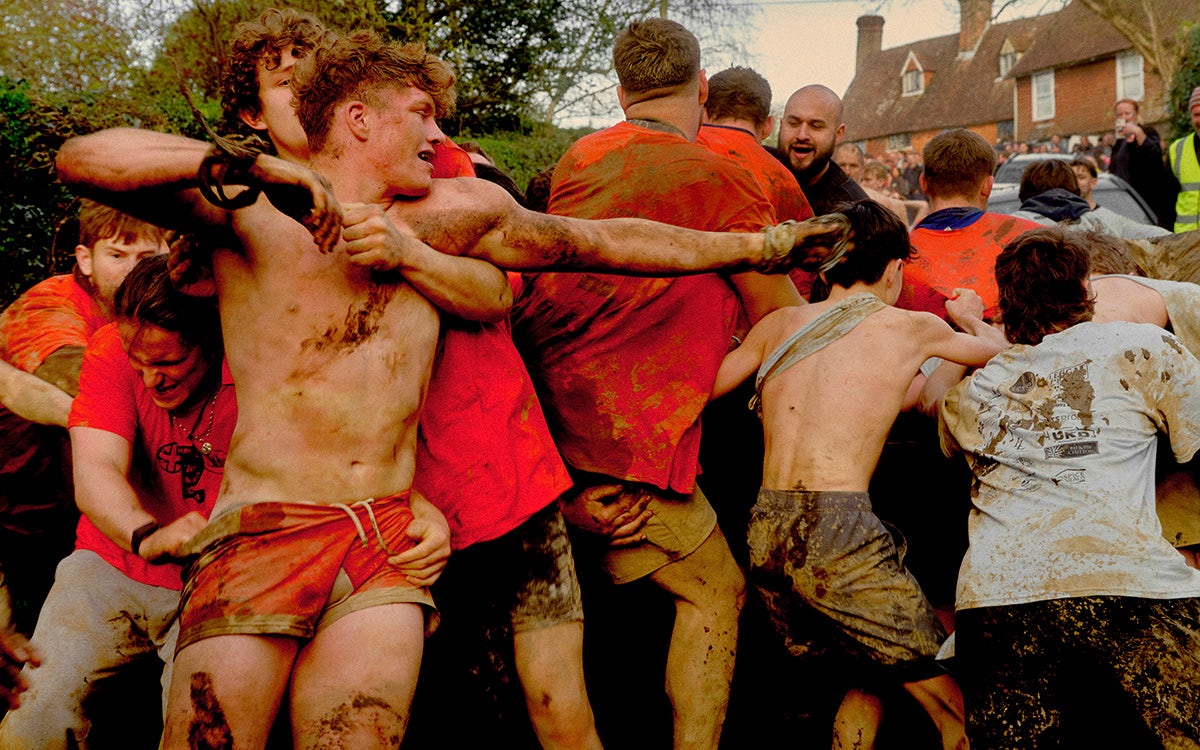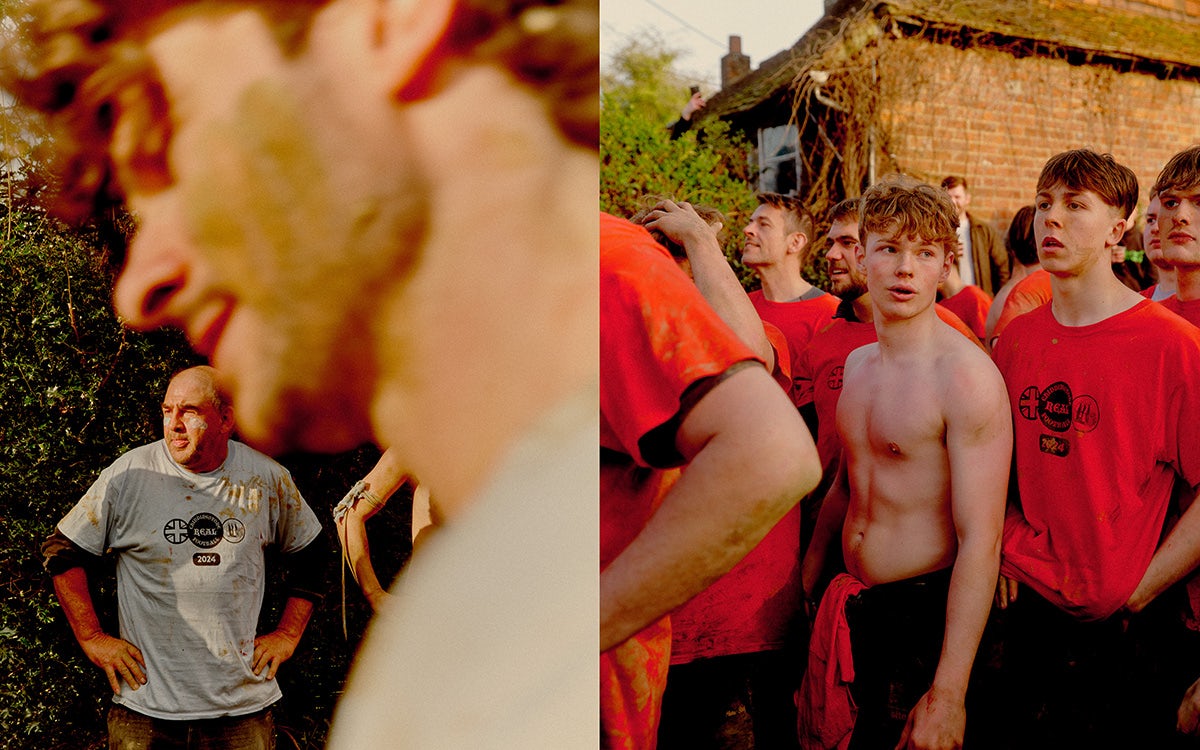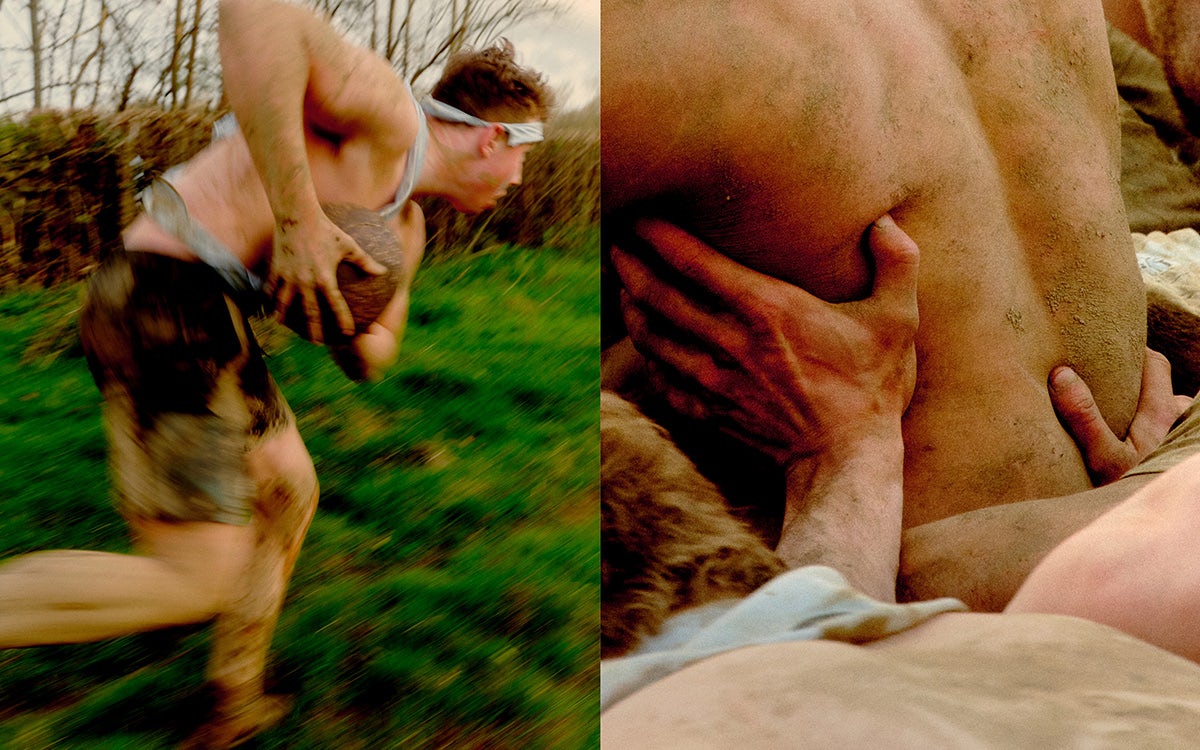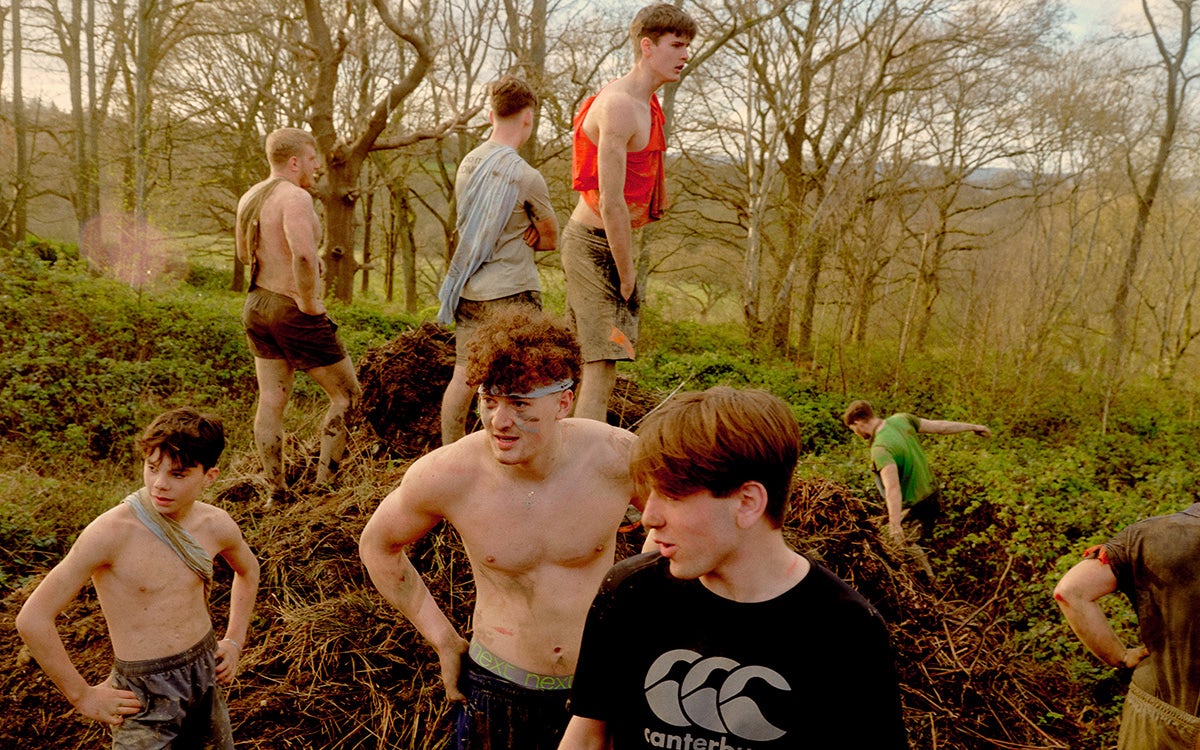Nick Bannehr captures traditional medieval football
The Australian photographer’s project Real Football documents a relic of British sporting history
“I discovered Real Football through my research of British traditions, in a bid to better understand the people, places, and landscape of modern-day Britain,” says photographer Nick Bannehr on the origins of his latest project. Originally from Sydney, Bannehr now resides in London, where he looks to document British society, tradition and culture.
Most recently, this pursuit led him to Chiddingstone in Kent – one of a few towns around England that still hosts an annual game of ‘medieval football’. Played on Good Friday each year, the game involves two teams of 200 players attempting to score goals across a sprawling pitch that runs between opposite ends of town. The match lasts around four hours, and for many participants is the ultimate test of hardiness and endurance.

“Much like the medieval matches played across the country, Chiddingstone’s game leaves spectators in awe, as it invokes the same spirit of community and competition that shaped the earliest forms of the sport,” Bannehr writes in his forthcoming photo book of the project. “These games, historically played with a pig’s bladder on feast days like Shrovetide, would involve entire towns, where the only limitation was death.”
Though a modernised version with more rules is now played, the match is still very much a brutal affair, and Bannehr says he was required to step into the middle of the chaos to capture the true essence of the game. “Working on this project was an intense yet exhilarating experience,” he recalls. “Capturing this chaotic and boundary-less four hour-long event meant fully immersing myself in its unpredictable nature.”
Bannehr says he was offered the assistance of an ATV and radios by the match organisers, so he could better track the shifting epicentre of action, though there were still “long [periods] of waiting, unsure of when or where the play might resurface”. Naturally, his photographs move between moments of stillness when the ball is elsewhere, and frantic bursts of action as it returns.
Through the imagery in the zine we witness the carnage that unfolds across the town during the game, but we also get a sense of the camaraderie and connection that pervades the pitch. Players move in groups, pulling each other along and putting their bodies on the line in the quest for a shared victory.


“This intensity allowed me to move close to the action without disrupting the flow of the game,” notes Bannehr. “At times, when the ball suddenly came my way, I even had to push it aside to avoid becoming part of the match myself. This raw, unscripted interaction made the project feel authentic and immersive.”
Speaking on the significance of the series and subject matter, he writes: “In a fast-paced and increasingly digital world, the game becomes a way to reconnect with human instinct and history, offering a rare moment to be truly present…. Medieval football in the modern sense has evolved, but at its heart, it remains a space where people can escape, reconnect, and rediscover the primal joy of the game.”











